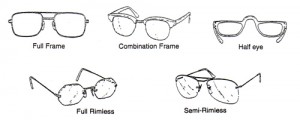Glasses Product Info
The best place to start when selecting eyewear is by working with one of our Opticians. All of our Eyecare Professionals have been trained as eyewear fashion consultants. When considering selecting frames and lenses, it is always wise to consider your Lifestyle as well as identifying what vision needs and function that you want your new glasses to serve. If you aren’t certain, our Eyecare Professionals are always ready and willing to assist you in identifying your answers to these questions. Please be aware that your current prescription will have an effect on what you may select and use. (Prescriptions may place limits on lens type and frame size and shape.) Below are a few Self Help Tips:
FRAMES
– What to look for in a frame
– Appearance
– Comfort
– Special Features
– Pick a Frame that’s right for you
LENSES
– Materials
– Types of Lenses
– Lens Treatments
– Lens Options
WHAT TO LOOK FOR IN FRAME CONSTRUCTION:
METAL FRAMES – solder points are neatly and solidly done at the bridge, nose pads, and temple areas. All edges are smooth and hazard free.
PLASTIC FRAMES – Hinges have been securely attached to front of frame and to temples. All edges are smooth and hazard free. Does the frame appear solidly constructed and able to withstand wear and tear? Or is it flimsy and will easily break under pressure?
APPEARANCE OF THE FRAMES:


COMFORT OF THE FRAMES:
METAL FRAMES – After a few simple adjustments, a quality frame should feel comfortable when being worn. The nose pads should rest comfortably on the nose and not pinch. Temples should extend and gently curve around the ear. If the temples extend well beyond the ear and must be bent into an unusual shape, the temple length is probable excessive and the optician should assist you in selecting a frame with smaller temples. Frame temples should not pinch or press upon your temples after being adjusted. If they do, ask our Eyecare Professional for a larger sized frame.
PLASTIC FRAMES – After a few simple adjustments, a quality frame should feel comfortable when being worn. The bridge should rest comfortably on the nose and not pinch. Temples should extend and gently curve around the ear. If the temples extend well beyond the ear and must be bent into an unusual shape, the temple length is probable excessive and the optician should assist you in selecting a frame with smaller temples. Frame temples should not pinch or press upon your temples after being adjusted. If they do, ask our Eyecare Professional for a larger sized frame.
WEIGHT – Modern metal and plastic quality frames are light in weight. Space age “exotic” materials offer even greater comfort with further reductions in weight while maintaining durability and strength.
SPECIAL FEATURES
SPRING HINGES – Spring Hinges are designed to help keep your frame in alignment and minimize the need for any adjustments.
SILICON NOSE PADS (available on Metal Frames Only) – Silicone nose pads are designed to comfortably “grip” the skin. This prevents slippage of the glasses and avoids the dreaded “pushing your glasses back up your nose” syndrome.
HYPO-ALLERGENIC – The acidity in some eyeglass wearer’s skin will react with metal frame’s finish and cause a greenish discoloration of the skin where the temples or nose pads touch the skin. Other eyeglass wearers may break out in an allergic reaction to their metal frame’s finish. Titanium is an excellent answer to either of these problems, as it is hypo-allergenic.
FLEXTRA by FLEXON – These frames have a “memory” that allows them to be twisted out of shape, then when released, they snap back into alignment
HOW TO PICK A FRAME THAT IS RIGHT FOR YOU
Several factors must be considered in selecting the right frame for your face:
1) WHICH FRAME IS RIGHT FOR YOUR PRESCRIPTION?
| Your Prescription is for: | Recommended Frame Style: | Benefits: |
| Strong vision correction for farsightedness (need assistance with reading or close up vision) | Choose a smaller frame with solid and durable construction. | Your glasses will be lighter in weight. By selecting a quality frame you will ensure that your lenses will be held securely. |
| Strong vision correction for nearsightedness (need assistance with distance vision) | Choose a smaller frame with rounded edges (selecting a larger frame will contribute to thick, heavy lenses, adding to the overall weight of the glasses) and/or choose frames with a wider frame front profile when viewed from the side. | Your glasses will be lighter in weight and appear thinner. Selecting a frame with a wider side profile will ensure that your lenses will be held securely |
| Bifocals, TriFocals or Progressives (No-Line Bifocals) | Avoid choosing a frame that is too small. You need enough size in the frame to accommodate your multi-focal lens. As a general rule of thumb, allow for enough space beneath your pupil areas to place your bifocal or trifocal portion of the lens in the frame. | Your frame will accommodate any multi-focal lens, be it a bifocal, trifocal, or progressive, with your vision correct at all viewing distances. |
| Low Vision Correction for Nearsightedness or Farsightedness | Choose a smaller frame with rounded edges (Selecting a larger frame will contribute to thick, heavy lenses, adding to the overall weight of the glasses) and/or frames with a wider frame front profile when viewed from the side. | Your glasses will be lighter in weight and appear thinner. Selecting a frame with a wider side profile will ensure that your lenses will be held securely. |
2) TYPES OF FRAMES AND MATERIALS – WHAT IS YOUR PREFERENCE? Below are pictures of several basic frame styles. Frame designers and manufacturers have designed and offer every geometric shape possible as variations of these basic style designs.
All of the metal and plastic frames in our selection of frames will provide you a durable, fashionable frame. The frame material then becomes a matter of preference. Have you ever worn plastic frames before? Or do you prefer metal frames? Do you like adjustable nose pads? It’s all up to you!
3) FACIAL STRUCTURE – SHAPE: Ask a friend or family member to describe your face shape. Still not sure? You can determine your geometric face shape yourself! Just follow the dot system:
1-Take a photograph of yourself and place a dot on the photograph on both sides of the forehead, directly at the hairline.
2-Place a dot on the photograph on both sides of the face, on the cheekbones at the widest spot of your face
3-Place a dot on the photograph on both sides of the face at the jaw line.
4-Connect the dots on the photograph on each side of your face. You should see a geometric shape that fits into one of the categories below:
| Geometric Facial Shape: | Best Frame Shape: | Frames to Avoid: |
| Oblong | Full Frame with soft curves; Semi-Rimless with soft curves | Narrow angular frames |
| Oval | All frame shapes are good especially rounded | Any frame that is too small and breaks up the symmetry of your face |
| Round | Shallow with Non-Round Shape; Geometric shapes are good; Semi Rimless | Small or round shape |
| Heart | Full Frame that is narrow at the top and bottom | Frames that are wide at the top; Rimless and Semi Rimless |
| Square | Round Frame with soft curves; Cat Eyes or oval shapes | Highly angular shapes; Square Frames |
| Triangular/Diamond | Rounded Frame or geometric shapes | Highly angular shapes; Square Frames |
NOTE: In frame selection, remember the principal of opposites: Like shapes emphasize each, other unlike shapes de-emphasize each other. But these are guidelines only. The true rule is a frame that fits well looks great and is one you’ll be happy with!
FACIAL STRUCTURE – COLOR PREFERENCE: Do you prefer a ‘cool’ or ‘warm’ color? Below are colors corresponding to your preference?
Cools: Blue-Based colors and brighter colors, Silver/Pewter
Warms: Yellow-based colors and mellow or pastels, Gold/Bronze
LENS MATERIALS:
Selecting the right Lens Material is very important to ensure that you have the right lenses for your lifestyle. Below are some considerations:
PLASTIC
- FEATURE – The most commonly used Lens Material. Much lighter than glass.
- BENEFIT – More comfortable to wear. Recommend adding Scratch -Coating to reduce scratching from ordinary usage and to extend the life of the lens. We also recommend adding an ULTRA VIOLET treatment, which will block out 100% of the harmful ultra violet rays from the sun. This will protect your eyes from physiological damage and help prevent cataracts.
POLYCARBONATE
- FEATURE – 33% thinner and lighter than regular plastic lenses.
- BENEFIT – Greater comfort. Polycarbonate Lens are scratch resistant and come pre-treated with an ULTRA VIOLET treatment. In addition, they are Shatter Resistant, making them a great lens choice for active adults and children.
HIGH INDEX PLASTIC
- FEATURE – JCPenney Optical offers several premium High Index lenses. These lenses provide the thinnest and lightest lenses possible for strong prescriptions.
- BENEFIT – Very comfortable to wear. They are scratch resistant to extend the life of the lenses. Combined with a fashion frame, High Index Lenses will combine great cosmetic looks with maximum visual acuity correction.
GLASS
- FEATURE – The original ophthalmic lens material.
- BENEFIT – Glass is still available for a wide range of prescriptions. However, the weight of glass lenses makes this a less comfortable lens material.
TYPES OF LENSES
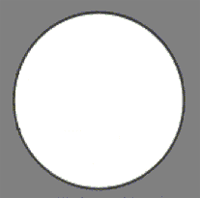
- FEATURE – The entire Lens is of the same power. It only corrects viewing for a single viewing distance.
- BENEFIT – Good for either reading or distance viewing only.
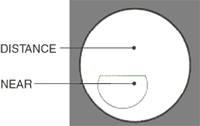
- FEATURE – This Lens corrects for both near (reading) and distance viewing. The SEG (Bifocal Window) is for your near viewing; the rest of the lens is for distance viewing.
- BENEFIT – Good for multiple uses like driving and reading.
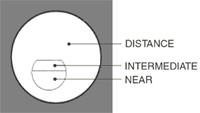
- FEATURE – This Lens corrects for near(reading), intermediate, and long distance viewing. The top portion of the SEG(Trifocal Window) is intermediate viewing; the bottom portion of the SEG is for reading. The rest of the lens is for distance viewing.
- BENEFIT – Good for all uses: driving, sewing, gardening, and reading.
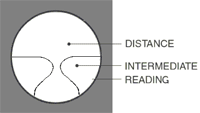
- FEATURE – The Progressive Lens is the best lens for COMPLETE VISION CORRECTION AT ALL DISTANCES. It corrects for reading, intermediate, and distance viewing. The Progressive Lens’ ultra modern lens design allows you to adjust your focus from one viewing distance to another naturally and easily, without distracting lines in your field of vision.
- BENEFIT – Great for all uses – Great for all uses – all lifestyles – perfect for driving, sewing, golfing, gardening, and reading. Reduces eye fatigue. And no one will know that you’re wearing a multi focal lens; with Progressive Lenses, there aren’t any embarrassing bifocal lines!
LENS TREATMENT
JCPenney Optical offers you a wide selection of Lens treatments to meet your Vision and Lifestyle needs.
ULTRA VIOLET TREATMENT – Our Ultra Violet Treatment blocks out 100% of harmful Ultra Violet rays. Exposure to Ultra Violet rays has been linked to corneal damage, the premature development of cataracts, and other eye disorders.
- For sunglass wearers it’s a must. Sunglasses without an Ultra Violet Treatment can actually increase UV exposure as the dark tint allows the pupil to open wider, thus allowing more harmful UV rays to pass through the eye. For sports enthusiasts or those who work or play outdoors, an Ultra Violet Treatment can help reduce the potential damage done by ultraviolet rays from exposure to the sun.
- For those who work indoors and are exposed to fluorescent lighting, use computer terminals or watch television will benefit from reduced glare and increased viewing comfort.
- Anyone who has had cataract surgery needs an Ultra Violet Treatment on their lenses to prevent any further damage to their eyes.
SCRATCH COATING – Scratch Coating is a totally clear coating that can be applied to plastic lens and is included with our polycarbonate lenses. Scratch coating will extend the life of your lenses. The coating makes the lens surface harder and better able to resist scratches from ordinary usage. However, it will not make the lenses SCRATCH PROOF, only Scratch Resistant.
ANTI – REFLECTIVE COATING – AR or Anti-Reflective Coating is a thin, multi-layer film coating applied to the lens surfaces, which eliminates reflected glare and increases the transmission of visible light by 8 -12%. The application of an Anti – Reflective Coating reduces:
- streaking and halos from oncoming headlights in night driving.
- reflections and glare caused by flourescent lighting and computer screens.
- the scattering of light and ‘ghost images’.
An Anti-Reflection Coating will improve the the cosmetic appearance of your glasses and allow your eyes to be seen without glare caused by light reflected off the lenses. It will also improve your visual acuity by sharpening images, help alleviate eye fatigue, and eye strain/discomfort from night driving.
TINT – Tint by definition is the color shading of a lens. Tints are multipurpose: first they are cosmetic and add a fashion flair! Second, they add to your comfort by helping to eliminate glare and provide relief from eye strain. Dark tints create sunglasses and light or fashion tints make you and your glasses look Great! Colors come in blue, green, gray, honey, turquoise, brown, amethyst, and MORE!
MIRROR COATING – Adding a mirror coating to the front surface of a lens will decrease the amount of glare you receive and add a fashion flare to your sunwear, making your prescription sunglasses look like popular non-prescription brands. And mirror coated lenses are effective in reducing reflected glare off of snow, ice or water. It may also be combined with polarization to get the best in sun and glare protection.
LENS OPTIONS
JCPenney Optical offers you a wide selection of lens options to meet your Vision and Lifestyle needs.
Transitions Lenses – Transitions Lenses are the lenses that change color! They are designed to provide comfort in almost every indoor and outdoor lighting situations. Transitions Lenses are virtually clear indoors, so they are perfect for your everyday, all-the-time glasses. With Transitions Lenses, you’ll notice increased visual comfort provided by their variable-tint qualities. Transitions Lenses are made of the latest lens materials and are available in most prescriptions and are compatible with all frames styles including rimless styles. They are available in grey and brown tints.
- Are Transitions Lenses an alternative to clear lenses?
Yes, because Transitions Lenses are the ideal all-around lenses. They adapt to any light condition; while indoors they are clear and, when exposed to sunlight, they darken. In addition, they provide 100% Ultra Violet protection even in their clear state, so they’ll protect your eyes from the harmful ultra violet rays of the sun. - What if I want a light tint indoors, not a clear lenses? Transitions makes a lens called Xtractive for those customers preferring a light tint indoors. The Transitions Xtractive has a light grey fashion tint indoors and goes to sunglass-dark in direct sunlight.
- How fast do Transitions Lenses work? Transitions Lenses begin to darken the moment they are exposed to ultra violet rays. When the ultra violet rays are removed, the lenses return to their clear state. Most users report that this transition happens so smoothly and quickly they are unaware of the change. They are aware, however, of their continued visual comfort.
- Can Transitions Lenses be used like sunglasses? In most outdoor conditions, Transitions Lenses are perfect for reducing the sun’s glare. They actually lighten and darken as the sun goes in and out of the clouds. However, in extremely high temperatures, Transitions Lenses may not always get as dark as sunglasses.
- Will Transitions Lenses replace the need for sunglasses? Even though they get as dark as sunglasses, they are not meant to replace sunglasses. Transitions are designed as everyday glasses and to enable you to see more comfortably in any light condition. However, in certain situations, the need for prescription sunglasses will still arise. For example, in a car, Transitions Lenses darken very little because the windshield blocks most of the ultra violet rays that cause the lenses to darken.
POLARIZED LENS – Polarized Lenses make the best sunglasses and driving glasses. Polarized Lenses filter out horizontal rays of light to reduce or eliminate glare. Polarized Lenses will reduce or eliminate the glare from the sun’s reflection from or on a large body of water (i.e. lake or ocean), or off bright white snow, car hoods, windows and road surfaces. Polarized Lenses also provide 100% protection from the harmful ultra violet rays of the sun while increasing visual clarity and depth perception.
PREMIUM PROGRESSIVES – A variety of Premium Progressive Lenses are available that offer you thinnest and lightest lenses available, coupled with excellent vision correction. These Premium Progressive Lenses allow you to maximize your eyewear comfort and visual acuity for a variety of activities and lifestyles.
Polycarbonate – Was initially used for safety and strength. In addition to being thinner than CR-39 plastic, it is also the lightest lens available. It is UV and scratch coated. It is ideal for children’s glasses because the lenses are the most impact resistant. It is available for fashion tints and AR coat, but not available in sunglass tints.
Hi Index Lenses – Is lighter and thinner than conventional glass or plastic. It is an excellent option for string prescriptions. Remember, frame selection is important to maximize lens characteristics of high index.
Spectralite – These lenses are designed to be lighter in weight, thinner than regular plastic CR39 and reduces the magnification of the customers eye associated with strong plus (+) lenses (ie: bug eye effect).
Aspheric – an aspheric lens design has a continuously changing surface. In plus powers, the front surface of an aspheric lens can be compared to that of a hill, with a gradual flattening of the surface from the center to the edges. In minus powers, an aspheric lens may be likened to the shape of an oval, with a steepening of the lens surface toward the edges. One effect to the flattening or steepening, is that an aspheric lens can be made thinner and lighter. Another effect is it improves the visual performance of the lens from center to edge on stronger prescriptions.
Vizio 1.66 Ultra Thin – Vizio is an ultra thin high index and aspheric lens. Scratch coat, ultra violet filter and AR coat all included. No other options are available.
